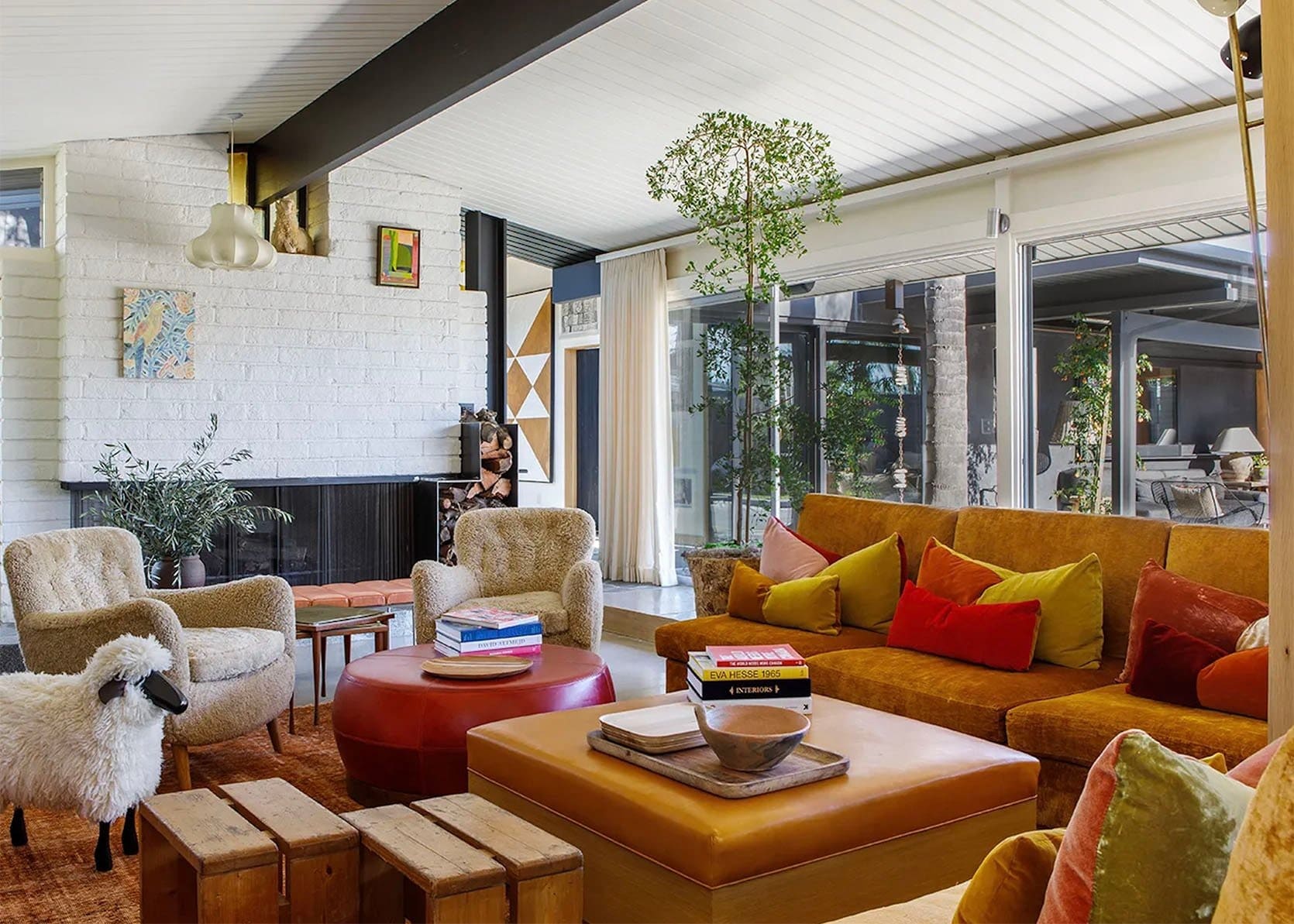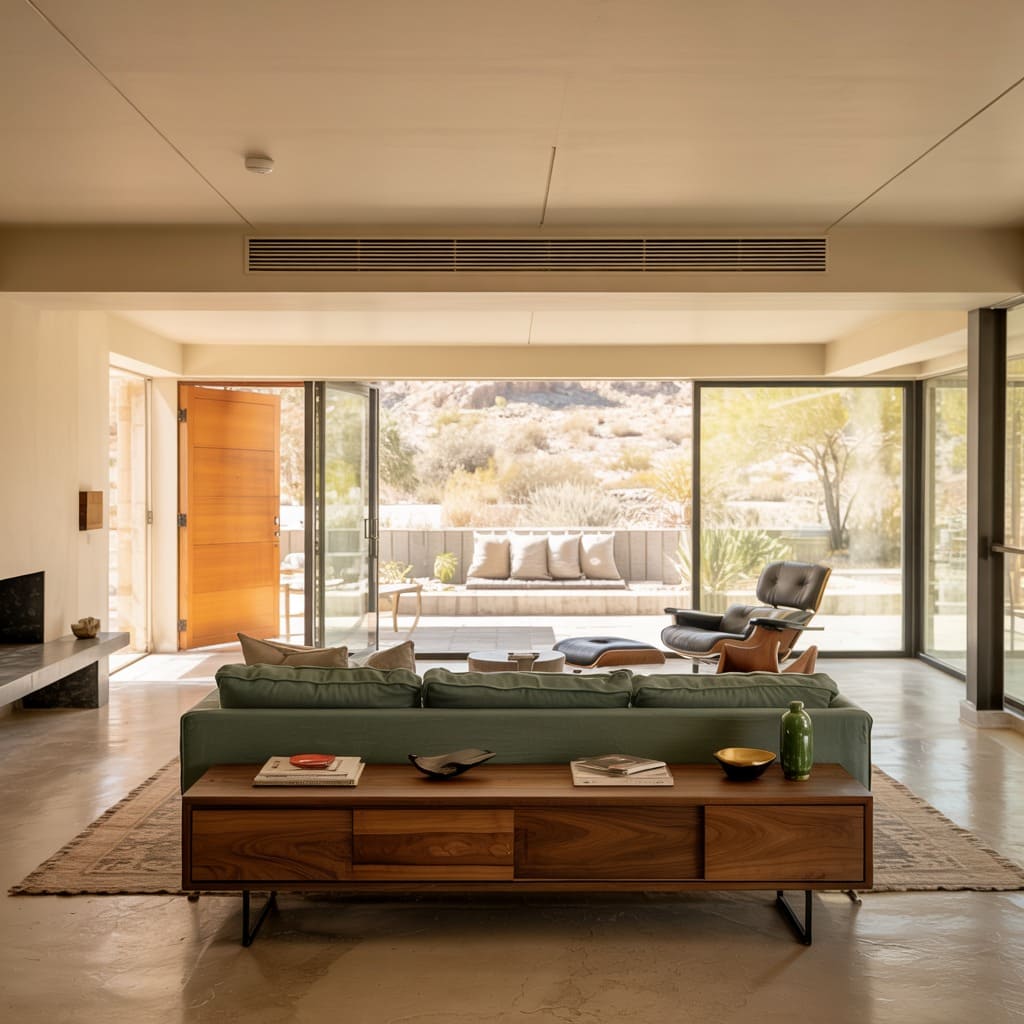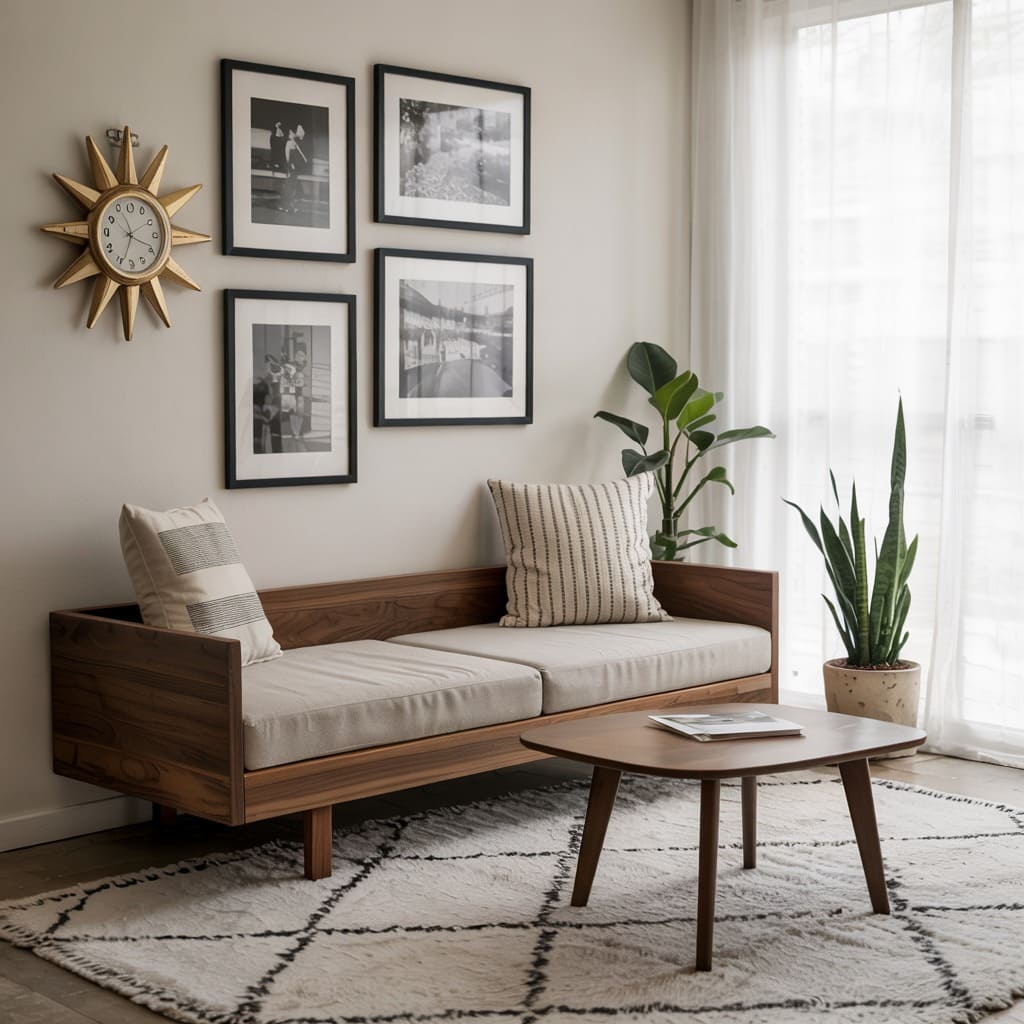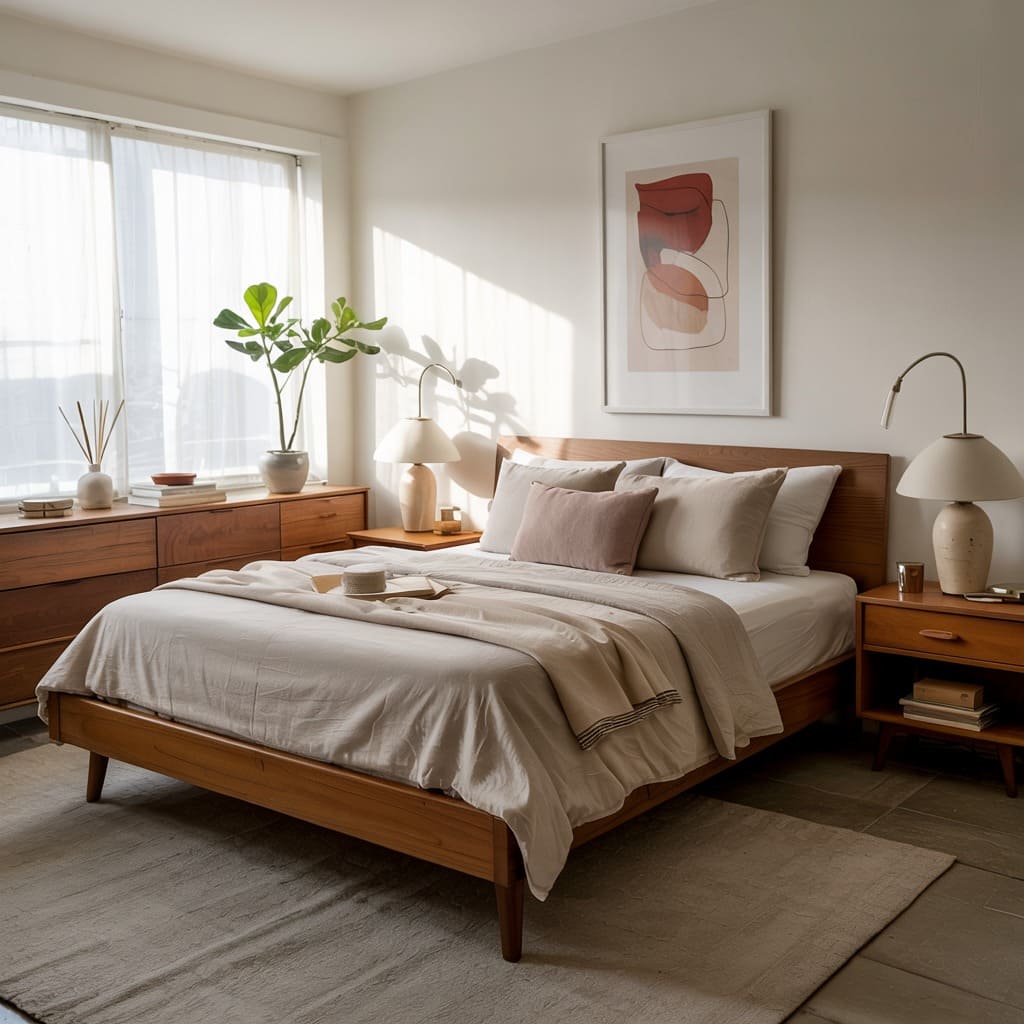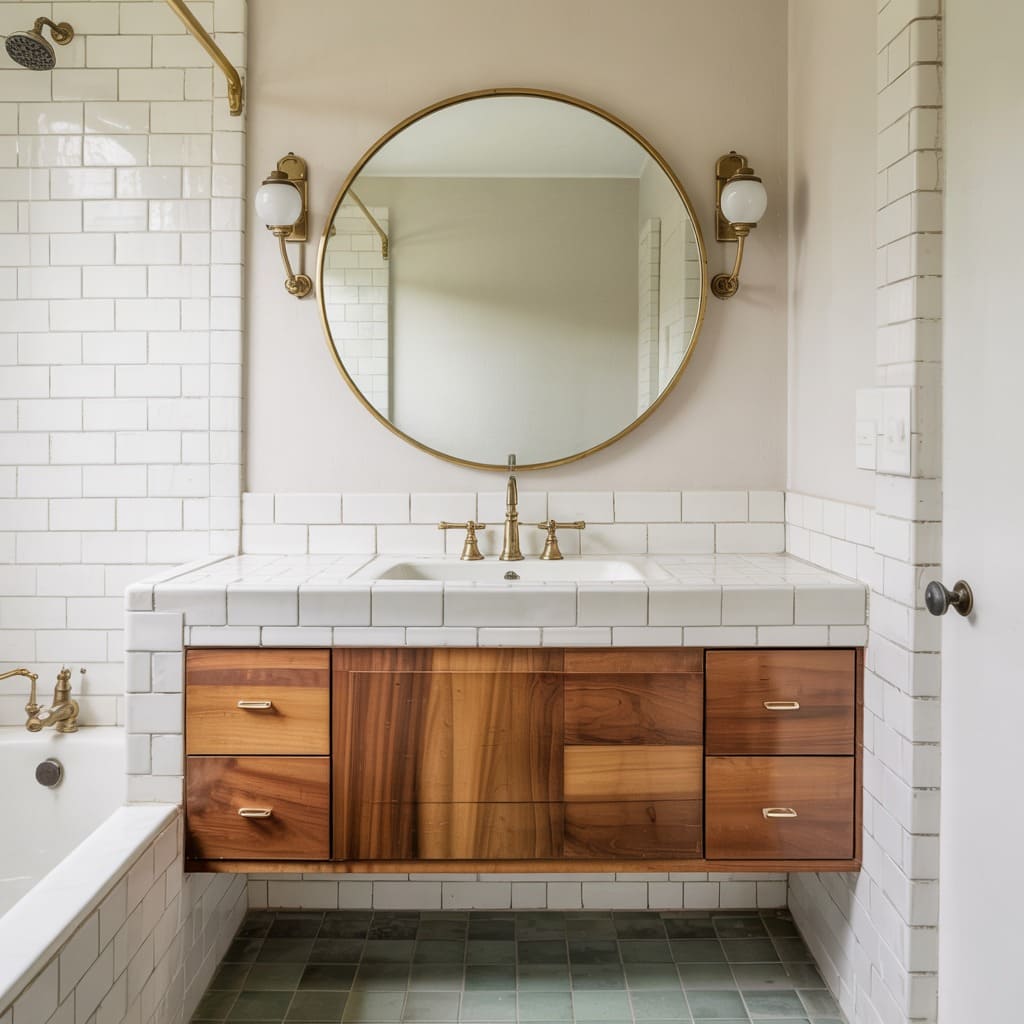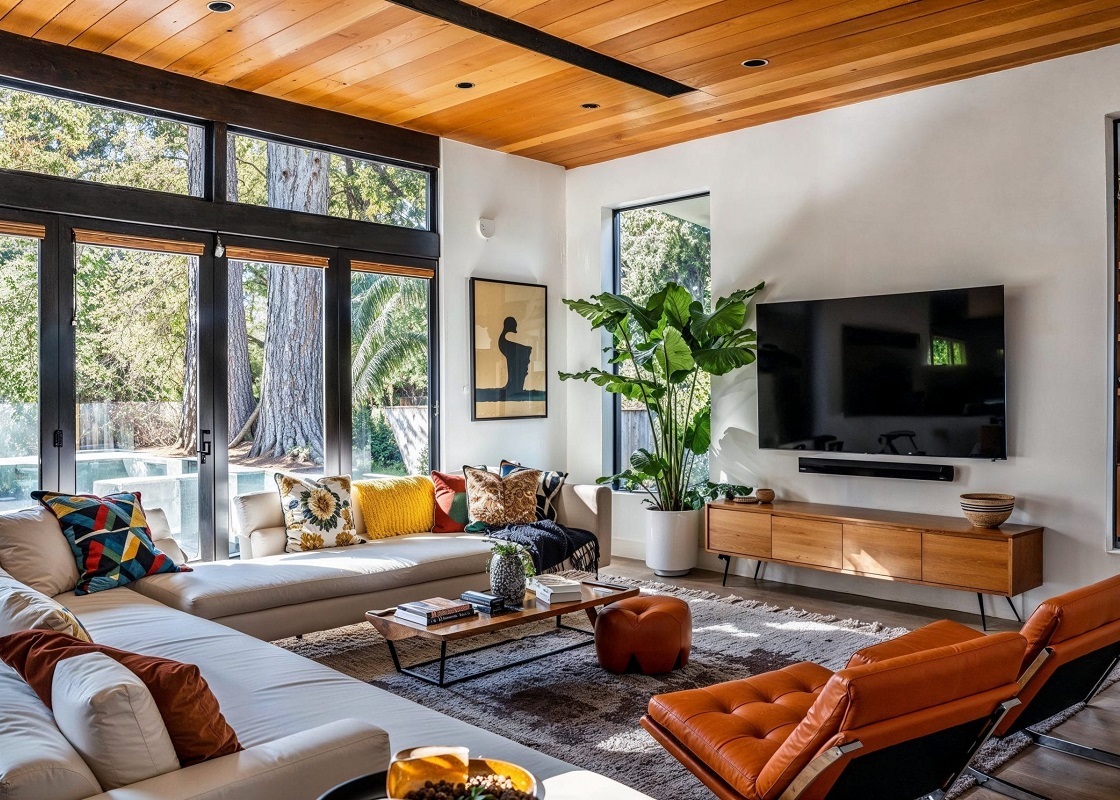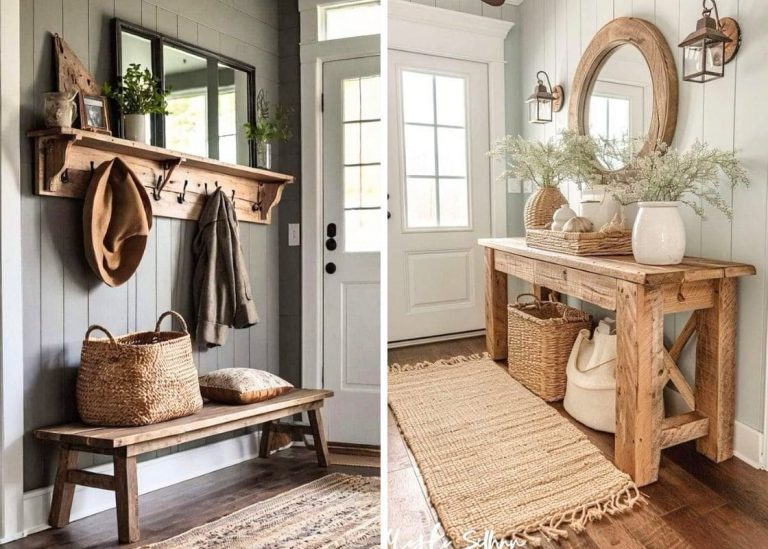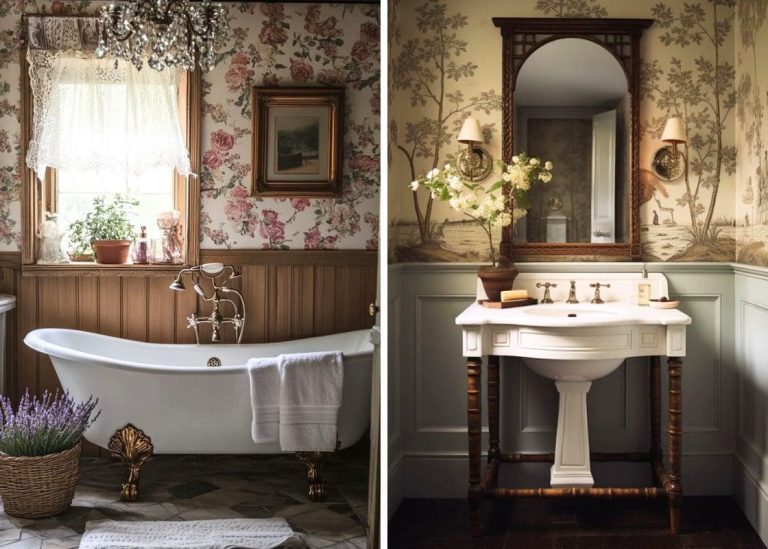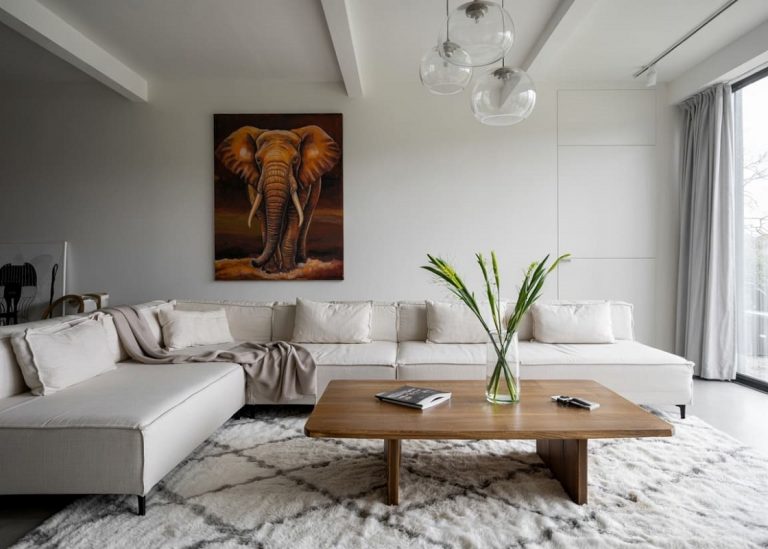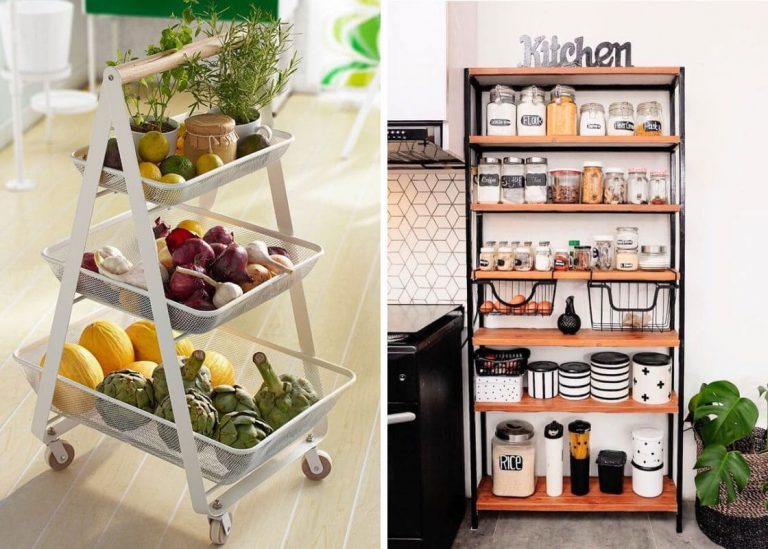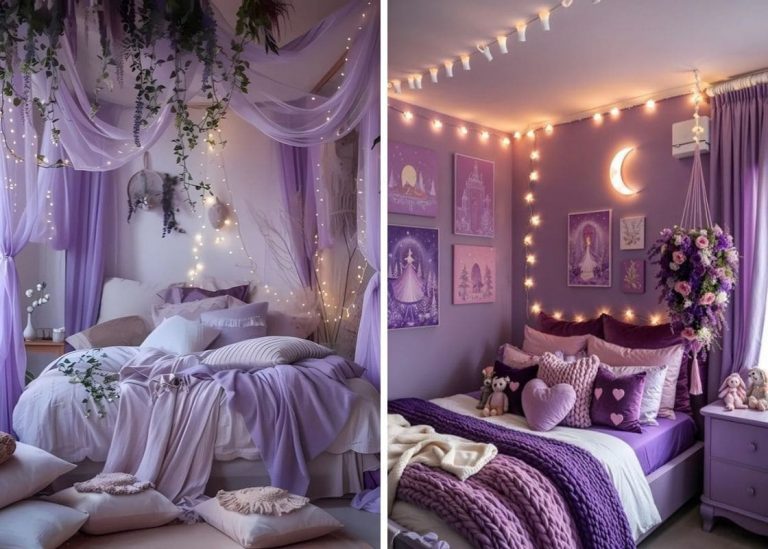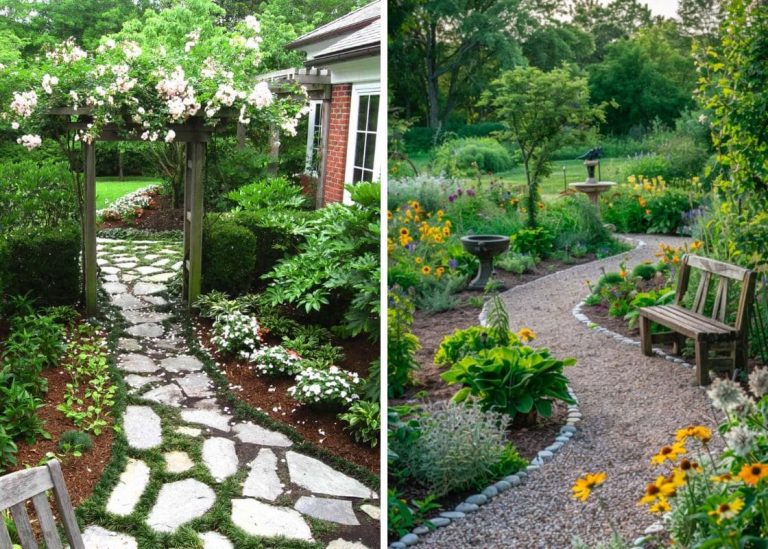Mid-Century Modern: Nostalgia in the Shape of Furniture
The first time I saw a real mid-century modern home up close, I didn’t even realize what I was looking at. We were on a weekend trip, walking through a quiet neighborhood with our kids riding scooters ahead of us, when I spotted this house tucked beneath tall trees. It wasn’t flashy or oversized, but it had a kind of effortless grace—low-slung roof, wide windows, and a front porch that seemed to float rather than sit.
I remember standing there a little longer than I meant to. There was something about the clean lines, the gentle angles, and that incredible balance of wood and glass that made me feel calm but curious. Like I was looking at something both nostalgic and ahead of its time. When I got home, I looked it up—and down the rabbit hole of mid-century design I went.
Over time, I started noticing those design moments everywhere—teak credenzas in thrift shops, walnut coffee tables in friends’ homes, that signature sunburst clock that somehow always feels fresh. I didn’t grow up in a mid-century home, and I don’t live in one now, but this style has taught me so much about thoughtful design and livable beauty.
What Is Mid-Century Modern Style?
Mid-century modern design emerged between the 1940s and 1970s, known for its focus on simplicity, utility, and the beauty of natural forms. At its heart, this style is about clean lines, open spaces, and thoughtful function.
But more than a look, it’s a feeling: fresh, optimistic, and balanced.
Signature features of Mid-Century Modern homes:
-
Flat planes and low-slung rooflines
-
Large glass windows to blend indoors and out
-
Open-concept layouts
-
Functional, streamlined furniture
-
Natural materials like wood, leather, and stone
-
Pops of bold color—teal, mustard, burnt orange—against warm neutrals
Mid-century design celebrates the idea that your home should serve your life—beautifully and practically.
Exploring Mid-Century Style Through the Homes of Others
Over the years, I’ve gathered bits and pieces of inspiration from people all over the world—friends, designers, online creators, and kind strangers who’ve let me peek into their homes through social media or blog tours. No two mid-century homes look the same, but they all share one thing in common: a love for simplicity and soul. Let’s walk through a few beautiful examples that bring this style to life in very real, very livable ways.
Claire’s California Gem – Warm Wood and Clean Lines
Claire is a photographer I met through a design group. Her 1962 ranch home in Palm Springs is a masterclass in mid-century balance. The exterior is flat-roofed and painted a matte cream, with a bright orange front door that practically glows against the desert landscape.
Inside, her living room is open and inviting, with a long walnut media console beneath floor-to-ceiling windows. A pair of Eames lounge chairs in soft black leather sit like sculpture, while a woven area rug adds texture underfoot. She keeps the palette simple—warm wood, white walls, and one deep green sofa.
Design tip: If you’re unsure where to start, invest in one sculptural furniture piece—like a vintage lounge chair or a tapered-leg table—and let it anchor the room.
Kitchen – A Fresh Spin on Retro
This kitchen belongs to the Thompsons, a family of five in Michigan who renovated their mid-century home with function in mind. The space features flat-panel oak cabinets, matte black pulls, and terrazzo countertops that feel vintage but clean. A floating shelf holds pottery and mugs in earthy colors, and a copper pendant light adds the perfect vintage flair.
What I loved most? The original pink tile backsplash they chose to keep—and pair with sleek, modern appliances. It’s a room that honors the past but lives fully in the now.
Note to remember: Don’t be afraid to keep original features that bring joy. With the right surroundings, even the boldest retro colors can shine again.
Jesse’s Studio Apartment – Small Space, Big Personality
Jesse, an artist living in a tiny Toronto apartment, proves that mid-century charm isn’t about square footage. His studio is less than 500 square feet, but every inch is intentional.
A compact walnut daybed doubles as seating and a guest bed, while a triangular coffee table sits on a low-pile, graphic rug. On the wall, a small gallery of black-and-white photos and a 1960s-style starburst clock set the tone.
Even his plants are chosen with care—slim, sculptural, and placed to add life without overwhelming the space.
Tip for small homes: Mid-century furniture often comes with slimmer profiles and elevated legs—perfect for keeping things airy and functional.
Leila’s Peaceful Bedroom – Wood, White, and Soft Light
Leila is a friend of mine from Oregon who recently transformed her bedroom into a calm mid-century retreat. She started with a teak platform bed, layered with linen bedding in sandy tones. Her nightstands are vintage, each holding a simple ceramic lamp and a favorite book.
Above the bed hangs a single framed abstract print in rust and blush, giving the room just enough color. A long dresser beneath the window holds folded throws, a diffuser, and a small fiddle-leaf fig.
Her tip: Keep décor minimal in bedrooms. One or two soft focal points are enough—let the materials and lighting do the rest.
Bathroom – Retro Meets Modern-Day Spa
Sophie, a reader who sent me photos of her recent renovation in Austin, turned her compact bathroom into a mid-century dream. She used square mint-green tiles on the floor, white vertical subway tile in the shower, and added a floating wood vanity for warmth.
Her mirror is round with a brass frame, and her faucet? A vintage find cleaned up and reinstalled. It’s the kind of bathroom that feels fresh but rooted, clean yet full of story.
Helpful advice: Mid-century bathrooms don’t have to be all white or gray. Add soft color through tile, textiles, or even just a colored glass soap dish.
Backyards and Patios – Mid-Century Outside the Walls
One of the most memorable outdoor spaces I’ve ever seen was shared by a couple renovating their Phoenix home. Their patio had breeze-block walls, a built-in concrete bench, and string lights zigzagging overhead. They finished the space with Acapulco chairs and potted succulents in warm terracotta.
Closer to home, one of my neighbors recently installed a slatted cedar privacy screen around their deck and added a fire bowl and low wood furniture that looks right out of 1964.
Try this: Add mid-century touches outside with clean lines, modular seating, low tables, and simple planters. Let the space breathe—no need for heavy decor.
Tips to Embrace Mid-Century Style (Wherever You Live)
Whether you’re in a vintage ranch, a city apartment, or a new build, you can weave in mid-century modern style without doing a full renovation. Here’s what I suggest:
-
Start with wood. Warm walnut, teak, and oak make excellent foundations.
-
Add one bold shape. A round mirror, kidney-shaped table, or arc floor lamp instantly nods to the era.
-
Keep your palette simple. Earth tones with pops of mustard, navy, or coral work beautifully.
-
Let furniture float. Choose elevated pieces with legs over bulky bases.
-
Curate, don’t clutter. Negative space is your friend.
Final thoughts
There’s something quietly powerful about a home that balances form and function, beauty and purpose. Mid-century modern style does exactly that—it brings calm without being boring, personality without being loud. It reminds us that good design doesn’t have to shout to be felt. It just needs to fit the way we live, love, and grow.
As I walked through each of these homes—whether through messages, photo tours, or hours spent admiring their spaces online—I kept returning to one feeling: ease. These homes aren’t just lovely to look at. They’re livable. They work. They breathe.
Can you picture it? A sofa that feels as good as it looks. A room that doesn’t try too hard. A light fixture that makes you smile every time you turn it on. That’s the magic of mid-century design.

